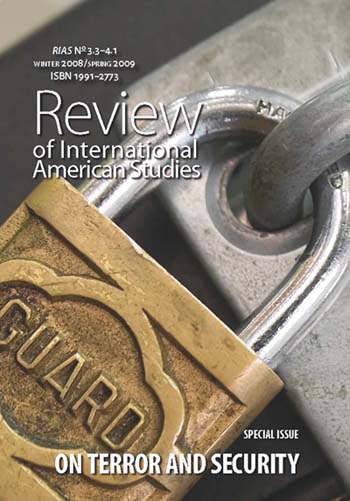Bureaucracy, Coercive Force and Individual Agency: The Gendered Protagonist in the ‘War on Terror’
Bureaucracy, Coercive Force and Individual Agency: The Gendered Protagonist in the ‘War on Terror’
Author(s): Stuart PriceSubject(s): Language and Literature Studies, Studies of Literature, Other Language Literature, Cultural Anthropology / Ethnology
Published by: Wydawnictwo Uniwersytetu Śląskiego
Summary/Abstract: The 9/11 Commission noted that the institutions ‘charged with protecting [US] borders, civil aviation and national security’ had failed to appreciate the gravity of the threat posed to the United States by a ‘sophisticated, patient, disciplined and lethal’ enemy (9/11 Commission Report, 2004: xvi). This censure of official agencies may suggest a powerful bi-partisan assault on the incompetence of the US security apparatus, but the extent of the critique is limited by the Commission’s remit, which was to investigate the ‘facts and circumstances’ of the September 11th attacks (xv). The final Report, therefore, did not attempt to ‘assign individual blame’ but to provide ‘the fullest possible account’ of the events of September 11th (xvi). The ultimate goal, it claimed, was to help prevent another such operation achieving success on American soil.The Commission’s explicit refusal to determine individual responsibility, was entirely appropriate to the role it had been assigned (and presumably useful in securing the cooperation of witnesses). Another clear advantage in using structure (rather than individual activity) as the preferred frame of reference, was that it met the need to appear objective. Within the narrative of the Report, however, the formal concentration on systemic problems conflicts with the inevitable appearance of active, culpable human agents. In its assessment of political manoeuvring in the post-9/11 world, for example, it clearly implicates individuals. Paul Wolfowitz, in particular, appears as an early enthusiast for military action against Iraq (9/11 Report, 2004: 352). Initially resisted by some within the Bush administration, this immodest proposal eventually hardened into formal policy.Despite its declared limitations, the Commission’s work provides a revealing insight into the internal mechanisms of state bureaucracy and the role of individual actors in attempting to mobilise resources: it is packed with incidents that reveal the inability of senior officials to make the chain of command effective, to overcome communication breakdowns, and thus to gain an accurate picture of the perils they faced. A salutary example of procedural failure may be found in the confusion surrounding the decision, made on September 11th itself, to shoot down civilian aircraft should they fail to ‘divert’ from a suspicious course (40). Based on a telephone conversation with President Bush, Vice President Cheney had authorised fighter planes to engage the hijacked passenger jet United 93, unaware that it had already crashed in Pennsylvania. However, the order to ‘take out’ rogue aircraft was not, according to the Commission, passed to the first set of fighter pilots circling New York and Washington—who were told to ‘ID type and tail’ (44)—but was communicated to a second group which was scrambled from Andrews Airforce Base (44). The Report’s authors, commenting on this state of disorder, noted out that officials ‘struggled … to improvise...
Journal: Review of International American Studies
- Issue Year: 3/2009
- Issue No: 3-4
- Page Range: 60-71
- Page Count: 12
- Language: English

